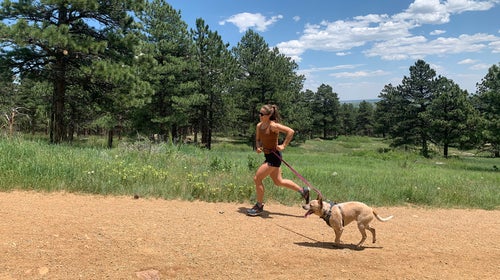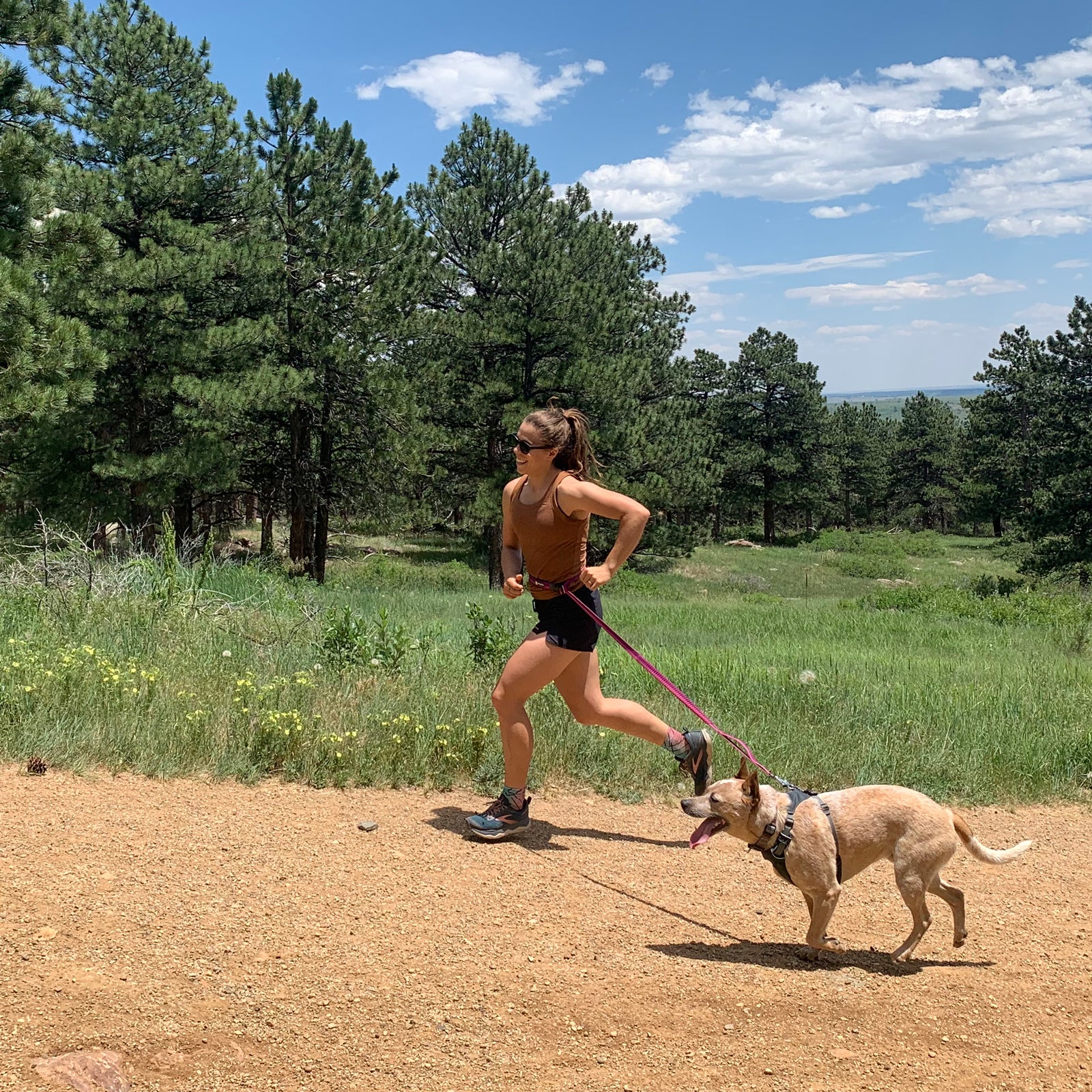Paco, a red heeler puppy, came into��my life like most other high-stakes things my husband and I have under our roof—after��months of theoretical deliberation, then a swift Craigstlist purchase when we spotted a good deal. We knew that being first-time dog parents would test us on many levels, but there was one thing I’d failed to consider: as much as Paco disliked being on a leash, I liked it even less. And while having a well-behaved dog like Paco��off-leash is��OK in select places, I knew he��would often need to be tied to me if we wanted to venture into��public spaces, which includes most trails near my home in Boulder, Colorado.
My mother-in-law sent us our first running leash, a static strip of black nylon webbing that I could Velcro��around my waist and clip to his harness. I felt like we had a heavy-duty umbilical cord stretched between us. He pulled. I pulled. He couldn’t sniff freely. I couldn’t go around the block without feeling like I had to pee, because the strap compressed my bladder. Thus began the hunt for the best leash for dogs that pull. All I had to do was sift through the blackhole-vortex of dog gear. No big deal.
A full dog-running system involves three components: a harness for the pup, a waist belt for the human, and a tether to connect the two. Companies make��many variations of��this basic setup. Some sell sets, others sell individual components �la carte.
I reached out to��people who run with dogs, and it was immediately clear which setup��would win a popularity contest. “The Roamer leash by Ruffwear is my favorite!” says , a dog mom and professional ultrarunner��from Washington. “I like the bungee for a bit of give if she chases a squirrel. If she’s off-leash, I just wrap and clip the rest of the leash around my waist.” Moehl��and her miniature Australian shepherd, PD, are sponsored by Ruffwear, but��the dog-leash brand is the only one she’d ever considered working with.
Professional ultrarunner Cat Bradley, who lives in Nederland, Colorado,��also uses the Roamer, as do��Ray Nypaver, a trail runner and running coach based in Estes Park, Colorado, and Alex Hasenohr, an Oregonian��who logs��as many as 60 miles a week with her dog, Otto. On my own local trails, it seemed liked every other dog was rocking one of Ruffwear’s colorful tethers.
Based on these��popular recommendations, I figured the Roamer was a safe bet, but��I wanted to make sure. So��I sought out as many different leashes and harnesses as I could find.��I wound up with 11 products��from six different brands, and��Paco��and I spent a week testing each brand’s versions. By the end of the six weeks, we’d covered over 100 miles together.
Note: there isn’t much standardization across pet products, so double-check each brand’s measurements; for example,��Paco wears harnesses ranging from small to large, depending on the brand.��
The Best Dog Leash and Harness System
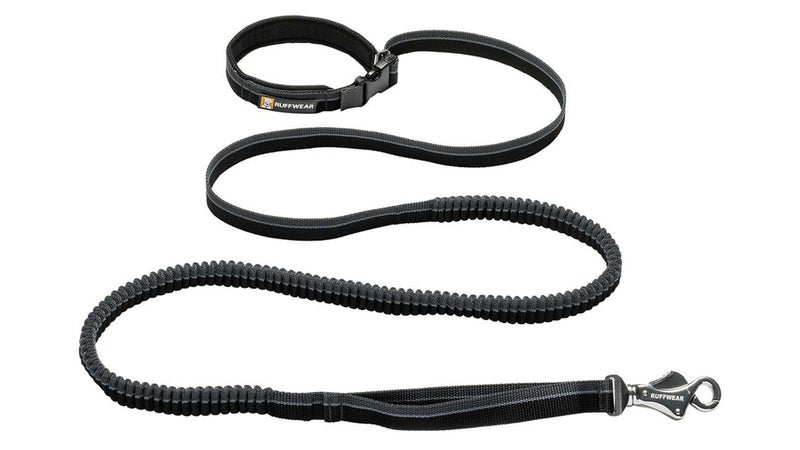
Ruffwear Roamer Bungee Dog Leash ($40) and Hi and��Light Lightweight Dog Harness ($40)
Sure enough,��the Roamer led the pack in our test.��It combines a leash and waist belt into a single no-frills piece that’s easy to use. The��bungee tether has an adjustable, buckle-clip waist loop on one end that attaches to the human,��and a carabiner on the other end to clip into a dog’s harness or collar. Right off the bat, I loved the pinching carabiner clip system, which eliminates the finger-dexterity frustrations and metal-ring fidgeting that I’ve experienced with traditional pull-down bolt snaps on most leashes.
It was the leash’s elastic, however, that changed everything for me. Unlike other bungee leashes on the market, Ruffwear integrates the elastic into its webbing, so there’s a smooth dispersion of force up and down the leash—not too stiff, not too loose—with no bunching. Minimalist padding along the adjustable waist loop (which can get��small enough for a wrist, so you can wear the leash however makes most sense for you), adds even more comfort. I don’t��feel like my stomach will be crushed if Paco pulls, and I have more time to react to his movements.
When it debuted in 2003, the Roamer was one of the first leashes made specifically for “adventure dogs.” With years of refinement and feedback from Ruffwear’s 189��human��product testers, Patrick Kruse, the company’s founder, told me that the Roamer’s most reported failure—worn-out and overstretched elastic—results��from a mix of poor treatment and time. The materials simply begin to break down, he says, similar to what “you would see in climbing rope��when you or your dog steps on it��or grinds sand in it.” After��only a month of use, ours is still perfectly shock absorbent. Our only gripe is the weight of the pinching clip, which can feel bulky and cumbersome on a system that’s otherwise ideally��slimmed down. It’s sturdy, though, and Paco doesn’t seem to mind that it occasionally��bounces off his shoulder.
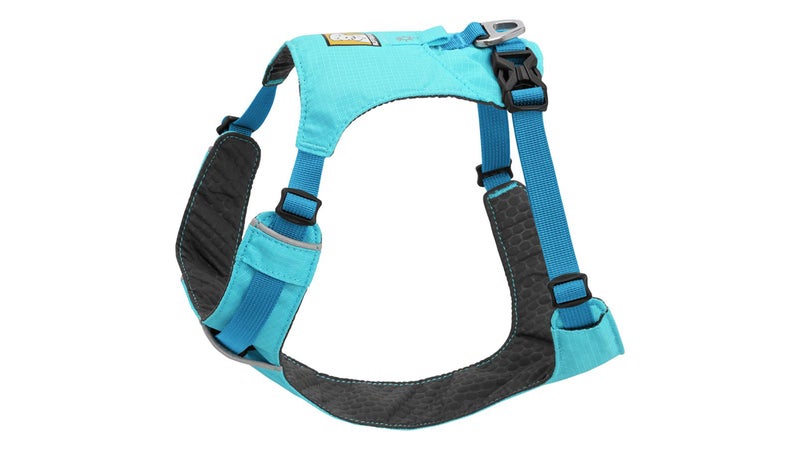
I paired the Roamer with Ruffwear’s Hi and��Light harness, a minimalist model with thin chest and back panels. The leash attaches to a metal ring on the back, and when we take off down the trail, Paco hardly seems to notice��he’s wearing anything. There’s also a small sleeve on the back panel, perfect for stashing poop bags or dog tags.
The Best of the Rest
Kurgo Journey Air Harness ($55) and��Quantum 6-in-1 Dog Leash ($30)
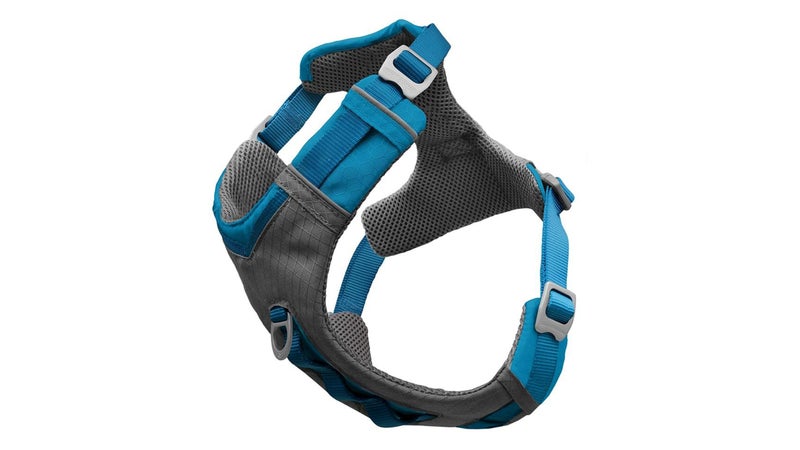
Kurgo’s Journey Air harness features sturdy front and back panels and leash attachments on��the chest and spine. Padding, an easy-to-grab back handle, and reinforced webbing loops on the chest make this the��perfect choice for dogs that need to be secured at the bottom of a rock-climbing crag, on a raft, or in the back of a truck. For running, however, these added components feel superfluous.
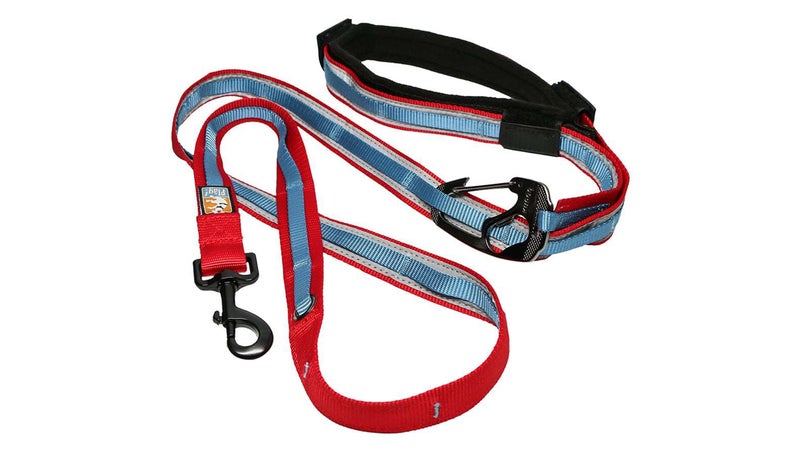
On its own, the 6-in-1 leash is by far the most versatile of the bunch. The human side adjusts to sling around a wrist, waist, or torso (messenger-bag style)��and has a carabiner that attaches to various points along the leash. This means you can adjust the length from three to six feet without having to unclip your dog. My only beef: the leash is not elasticized. On wide-open terrain, the Journey Air’s chest-clip system does keep Paco closer to me and pulling less. But I felt primed to trip over him��if he was in the lead, and he was prone to stepping over the leash on rocky or steep terrain (this happened��because, when clipped to the front chest panel, the leash tended to sag onto the ground on climbs as our pace slowed).
��
Ruffwear Trail Runner System ($70)
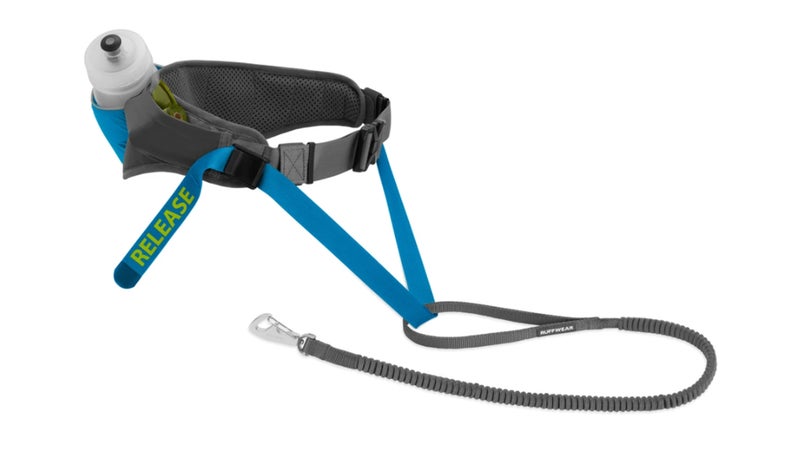
Ruffwear’s Trail Runner System consists of a waist-pack belt and the über-lightweight Ridgeline leash ($25��on its own). Like a fanny pack, the belt has pockets and a water-bottle holder,��but it also comes with a��leash attachment that works like a horizontal zip line: a��length of webbing across the front of the pack allows your pup a wide range of lateral movement if they’re running in front of you. A quick-release buckle on one side also enables you to free Fido with a flick of the wrist.
While I generally like the idea of having storage space around my waist, ultimately this belt felt too cumbersome for a short trail run (the weight of a full water bottle while running loosens the belt over time)��and redundant for longer runs, when I’d be wearing a running vest with water and snacks anyway. That said, it’s an ideal system for people who take their dog on short hikes and don’t want to carry a backpack.
Orvis Personalized Reflective Harness��($40)
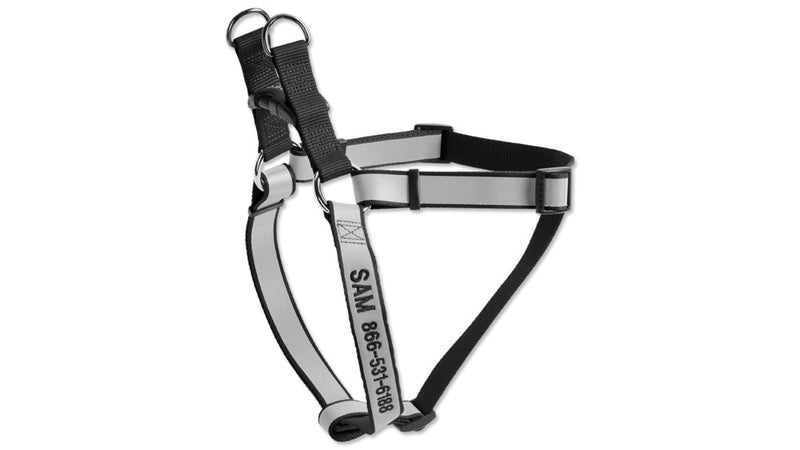
Curious about minimalist harnesses, we took Orvis’s Reflective model to the trails. Without any chest or back panels, it was easy to adjust the straps to Paco’s body. Meanwhile, a closed-loop system eliminates the loose flaps you’d typically find on a harness built for so much adjustability. Altogether, the Reflective is a great choice for a young dog that will grow��or a multi-dog family.
It is, however,��slightly heavier than the Ruffwear Hi and��Light and Kurgo Journey Air harnesses, both of which have padded panels. The flip side is��having Paco’s name and my phone number embroidered onto the webbing, which means we can leave his collar home sometimes. For early-morning or late-evening runners, the reflective webbing does its job well.
